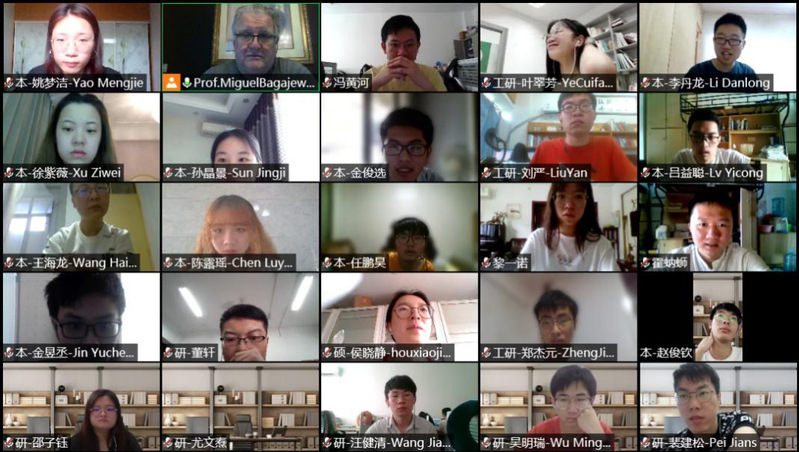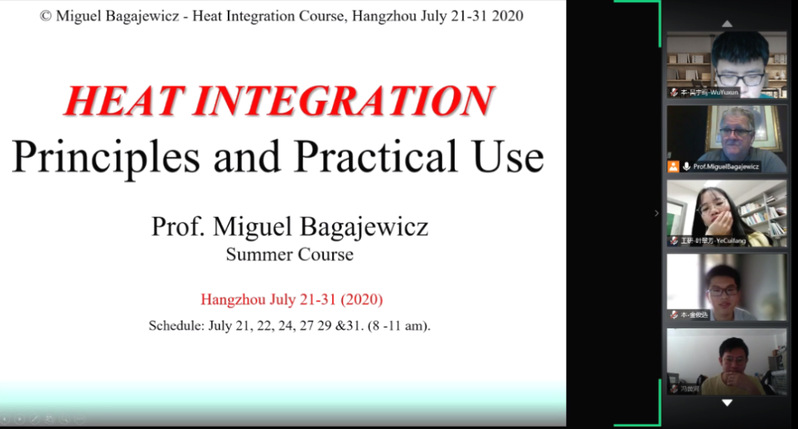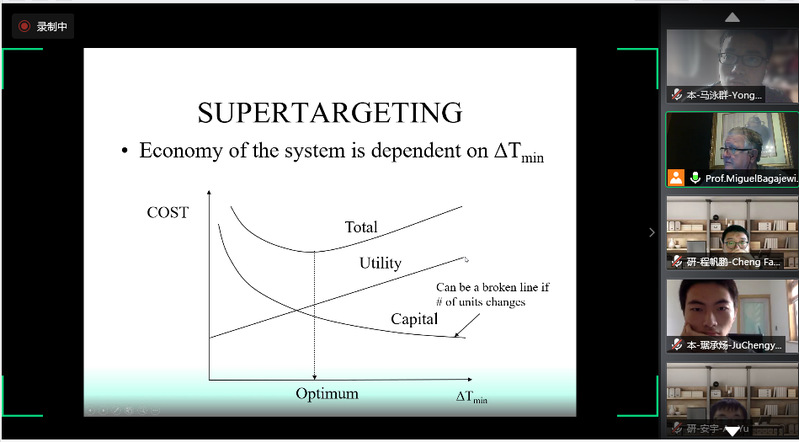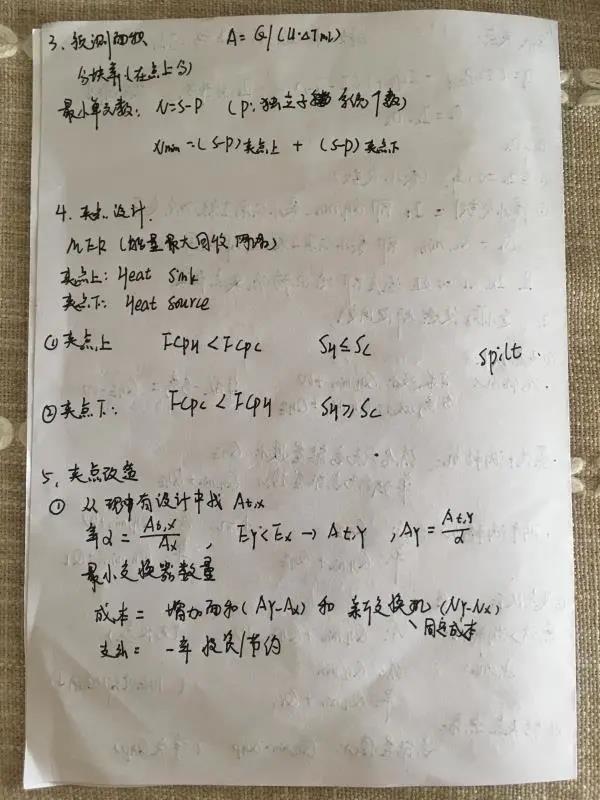
From 21 to 31 July, 2020, 37 undergraduates and 73 graduate students from the College of Chemical and Biological Engineering of Zhejiang University (ZJU CBE), organized and led by Prof. Liao Zuwei, Teacher Ma Jie and Huang Hailun, and the University of Oklahoma conducted an 11 day exchange event. Due to the impact of the epidemic, this oversea exchange was conducted online, it was an enriching and stimulating online learning experience this summer.

The University of Oklahoma (UO) is a research university with unquestionable strength in undergraduate construction and scientific research. This time, we were fortunate to have a cross-time communication with Professor Miguel J. Bagajewicz of the School of Chemistry, Biology and Material Engineering through the Tencent Conference.

Group photo of students and Prof. Bagajewicz
On the morning of the 21 July, Professor Miguel J. Bagajewicz greeted us warmly and led us into the course in pure spoken language.
The professor first introduced us to the general outline of the course, and then began the first part of the Principle and Practical Application of Thermal Integration of the adding technology method, that is, in order to achieve the goal of using the adding technology with minimal utility, a table-based Method of energy transfer after dividing the interval.
This is a perfect connection with our knowledge on the heating and cooling of heat exchangers involved in the course of chemical engineering principles, which broadens our knowledge.

Prof. Bagajewicz is introducing the syllabus
On the morning of the 22nd, Professor Miguel J. Bagajewicz introduced the GRAND COMPOSITE curve on the basis of the table method to analyze the placement of the utility program, that is, to achieve the ultra-target minimum cost in the heat exchanger network through the utility and other aspects of the mapping.
On the morning of the 24th, Professor Miguel J.Bagajewicz explained the exercises for the first exercise, and focused on the final problem-solving ideas of the largest recovery network using the dot design method, including energy relaxation methods.
Through the past few days of study, on the basis of the existing knowledge about heat exchangers, the students added a little bit of applied knowledge of technical methods, and opened up new ideas for understanding the problem. At the same time, everyone's spoken language has also been well tempered.
However, this is inseparable from the help of the students in the study group. They collected and shared some knowledge related to the classroom content in time before class, which provided a lot of convenience for our pre-class preview and the next day's study.
Although there was a weekend between the two classes, the students' desire for knowledge remained unabated. On the 27th, Professor Miguel J.Bagajewicz briefly introduced the functions and usage of GAMS software to the students, and explained in detail how to use GAMS models to establish mathematical models and transport models based on examples. Towards the end of the course, Professor Bagajewicz arranged relevant exercises for the students to think about and consolidate what they learned that day, and the students actively participated.
On the 29th, the course gradually came to an end. Professor Bagajewicz conducted a Q&A class to answer the questions that students have accumulated in the past few days in detail. After the Q&A class, Professor Bagajewicz introduced the hierarchical superstructure model, and analyzed and explained related equations and cases.
The 31st was the last day of online communication. Based on the content of the previous class, Professor Bagajewicz described the in-plant heat integration and the synchronous design of the network and heat exchangers. He also shared some practical industry experience on heat integration. The content of the lectures is summarized. Towards the end of the course, the students said goodbye to Professor Bagajewicz and expressed their sincere thanks.

Class notes
Under the shadow of the epidemic, the students and professors have overcome the difficulties together. While academic exchanges, they have also shown the possibility of online communication for everyone. During the 11-day online communication activities, different thinking collided with each other, bringing a feast of academic exchange across time and space for chemical engineering students.
For students participating in online exchanges, this is not only an opportunity to expand their academic horizons, but also provides a new way for international academic exchanges. Although the course has ended, we can still benefit a lot from it, and the chemical people of Zhejiang University will continue to study.

